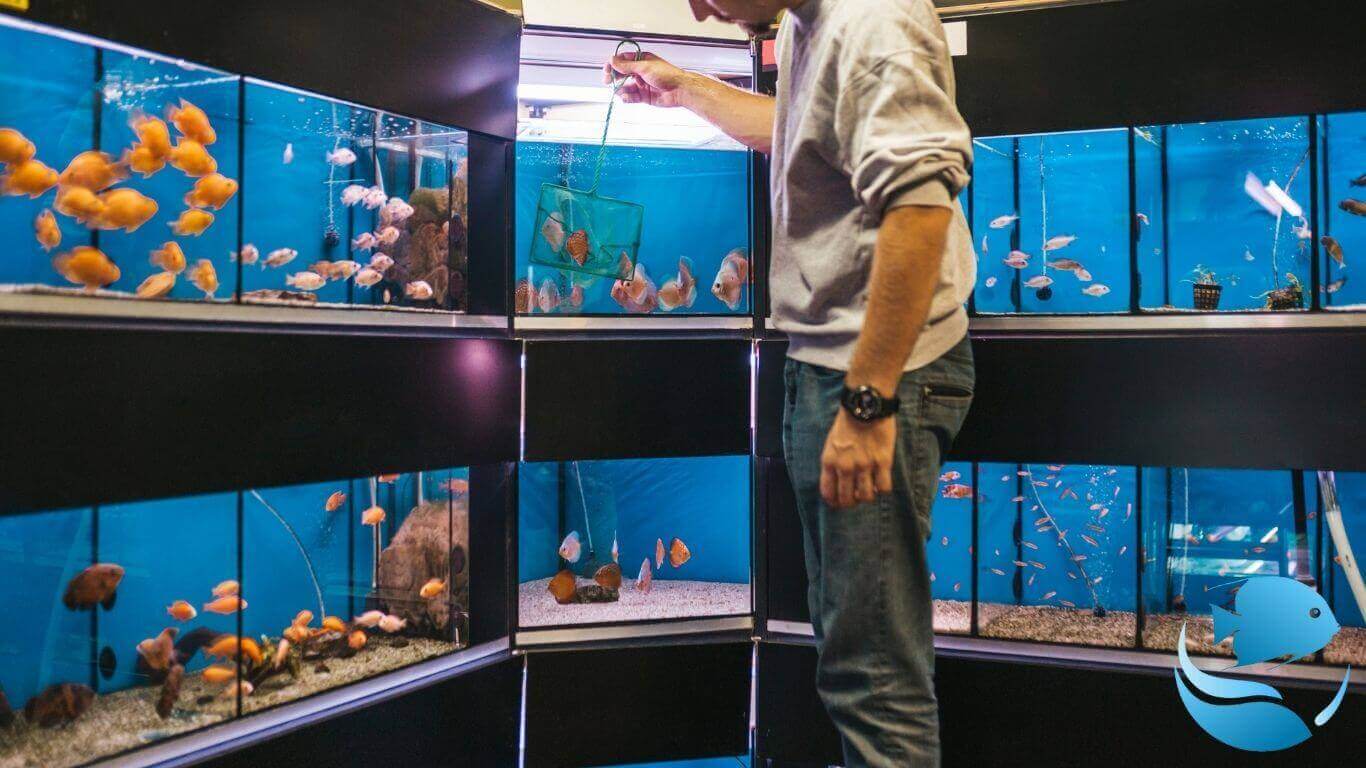
Fish tank culture is not easy, and for the uninitiated, there are many rules to follow. Indeed, this is necessary if you want to keep your fish tank’s content in the best possible conditions.
It happens that the plants die, the facades are covered with moss or algae form inside. Here are some practical tips on how to remove algae from your aquarium.
Algae in aquarium: good or bad?
Up to a certain amount, algae pose no threat to the aquarium and its occupants. But as this kind of plant grows very quickly and can fill the tank overnight, the visual will become less and less pleasant.
Your fish will no longer have space to rest or move around in the aquarium.
Some algae are also toxic like diatoms unlike spirulina which benefits them. So, if you are unfamiliar with the different species of algae, don’t take any chances.
Certainly, some have pretty colors like pink or red and give the impression of adorning the inside of the tank, but they multiply quickly and clutter it more than anything else.
Some might think that if plants soften or seem to wither, it is because of their cohabitation with algae.
Think again, only a deficiency in a few trace elements tends to make your aquatic plants look bad, including iron.
If there is not enough (less than about 0.25 mg/l) or if there is too much (more than 1 mg/l) your plants will lose their strength.
This is different for each case, so take a good look at yours and reduce or increase the amount needed depending on their condition.
It is important to remember that these organisms contribute more or less to the balance of the aquarium and in a small proportion, they are beneficial to it. As long as the water stays clear, you don’t have to worry.
Types of aquarium algae
Generally, many cannot distinguish them once in the water. Between brown algae and mold, the border is thin.
Be aware that mold grows at the root level. They take the form of a more or less dense white or yellowish film and envelop the entire surface. Sometimes it gets sticky.
Admittedly, algae come in different forms, but only mushrooms look like mini trees in water.
The environment in which they are found makes it possible to determine more quickly which species we are dealing with, because some live in fresh water, and others in sea water.
How to get rid of algae in fish tank naturally

You should first know that the appearance of algae results from negligence or poor maintenance of the tank.
Then remember to clean the filter as often as possible, so that it does not release nitrates, which are a natural fertilizer for this type of plant.
Algae is also a bit like bacteria and microbes. It likes humidity, heat, darkness, so to fight against this invasion, optimize the lighting of your aquarium.
If your lamp lacks power, you will quickly see vegetation forming through the glass. So count about half a watt per liter of water.
Normally, the lamp should remain on 24 hours a day, but in the event of accidental switching off, do not leave your tank in the dark for more than 12 hours.
To prevent this type of incident, replace your lamp every year.
An aquarium with Elodea-type plants is more likely to be spared than one where there are just a few fish and pebbles or artificial decorations.
Indeed, this kind of species appropriates the food intended for the algae, which greatly reduces the chances of survival of the latter.
You can also count on water hyacinths to limit their multiplication.
Furtermore, don’t jump on anti-algae substances that end up harming existing plants. Either they slow down their development, or they kill them slowly.
The same is true for so-called anti-algae tubes which, according to connoisseurs, are not completely effective and are only intended to increase the consumer’s budget.
If you have a little bleach in your house, that’ll do the trick. In about ten liters of water, or even a little less, you pour half a liter.
You hover your plants there for a minute and remove them immediately. Then pass them under clear water.
Protect yourself from the start
Many mistakes are to be avoided when you start your aquaculture such as putting too much liquid fertilizer on the first try.
Instead, divide the usual amount in half and mix it with CO2 to help plants and new sprouts grow faster.
Many also make the mistake of illuminating the area too much from the first installations. The trick is to light half for 8 hours, and gradually extend the duration over the quarter.
Limit the number of species in the small pool, animal and plant. Don’t overfeed your fish either. The excess will end up at the bottom of the jar and foul the water if you don’t change it once or twice a week.
When buying plants to put in your tank, make sure they don’t have any on them. Otherwise, you will find yourself having to treat them with potassium permanganate.
You mix 1 g with a liter of water and then inject 5 ml of this solution into the water of your small pond using a syringe. Wait ten or even fifteen minutes before throwing out the water and replacing it.
If you see your fish leaving remains after a quarter of an hour after feeding, catch them with a net.
Additional Reading
How to turn an aquarium into a reptile terrarium in 8 easy steps
- Feeding Eggs To Fish - December 27, 2022
- Cure Swim Bladder Disease In Fish - December 27, 2022
- Can Damaged Fins Grow Back? - December 27, 2022
